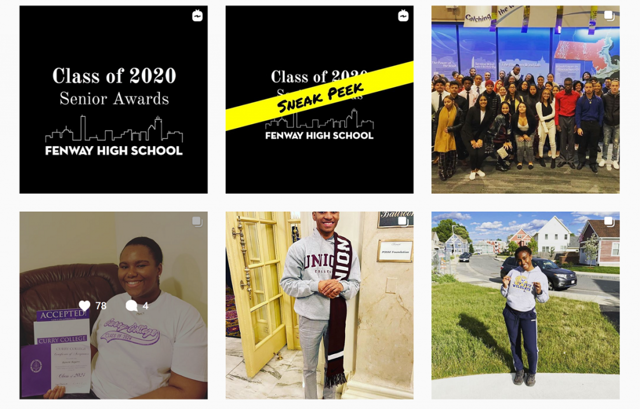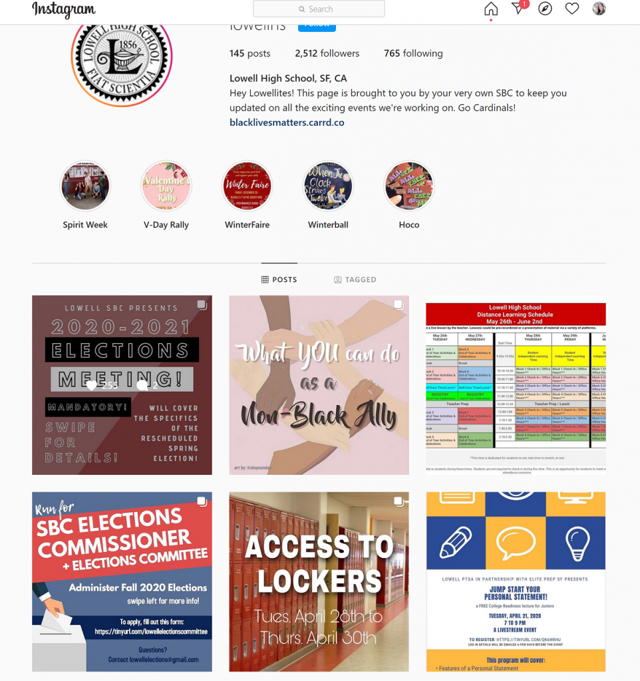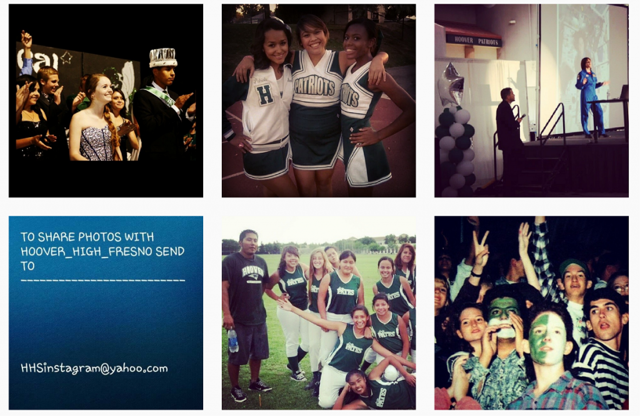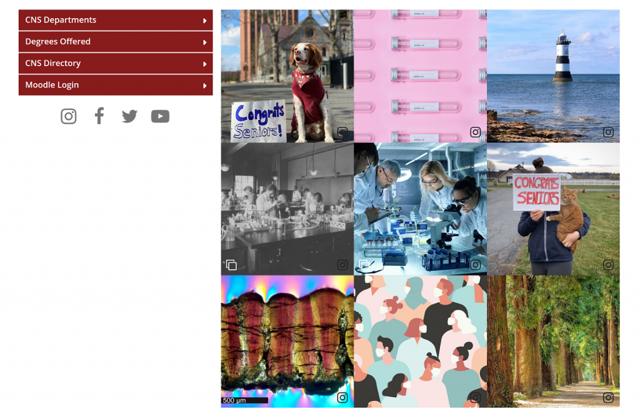Should your school have a social media account? Should teachers teach students how to effectively use social media? For administrators and teachers, there are a lot of unanswered questions when it comes to social media platforms.
In this post, we're breaking down the good and the bad so you can make informed decisions and take strategic action.
Curator is a social media aggregator that lets you easily embed your social media feeds right in your school website.
What are some of the issues that schools face with social media?
Schools face numerous challenging issues when it comes to social media:
- Bullying
- Inappropriate content
- Spreading rumors
- Harming school reputation
- Distractions from school work
Students can publicly get themselves and their schools into trouble by posting issues at school or engaging in hateful groups online.
The repercussions are many. Teen suicides increased 56% from 2007 to 2017, and while no one knows definitely why, many parents point at least some of the blame on the harmful affects of social media, where kids not only experience bullying but also can develop low self esteem.
When administrators post content about their school and students on social media they run several risks:
- Alienating certain students
- Not representing the entire student body
- Creating unhealthy competition
- Embarrassing or upsetting students
With all of these factors working against you, you might wonder whether you should even bother. But the story's not over yet.
What are some of the benefits that make social media worth using for schools?
Let's explore why, despite all of these challenges, most schools still produce social media content.

Communicate with students
Using social media gives schools another communicate channel with students, and this is important. In the context of strategic planning in higher education, it's crucial to recognize the evolving methods students use to communicate and stay informed. To put it bluntly: schools need every communication channel they can get. Students might not speak with their parents about communications sent home. They might not check their school email as frequently as they should. They might not pay attention to class announcements.
Social media is another way to capture student attention.
Schools can share all sorts of announcements on their social media platforms:
- Events
- Fundraisers
- Safety notices
- Special resources
Social media allows administrators to tell a story. It's an opportunity to get students to listen about issues that affect the entire school, such as not wasting printer paper or picking up trash. With social media, you can make the message more meaningful.
Communicate with parents
Social media accounts also help schools communicate with parents, who for reasons unknown, don't always check their email or listen to their voice messages.
In turn, parents can communicate with their children, so messages spread on social media can help parents know about any school-wide issues or events to speak with their kids about. Schools can arrange a workshop once in a while on advising kids and their parents about internet safety and using social media.
Community building
Social media also gives schools a chance to foster a better sense of community. This means not just with parents, students, and teachers, but also extended family members like aunts, uncles, and grandparents, as well as local citizens who might want to donate to certain school events or classes or attend games.
Awareness of local issues
A school's social media account be used for good in many ways. One of these is to spread awareness of local issues and causes. A school can gain a following with current students, family, alumni and local citizens. Schools can use that follower power to promote local charitable organizations and encourage families to pitch in and do their part.
Positive branding
We all need a leg up. Schools get a lot of flack from dissatisfied parents. While a private school will of course be concerned with marketing and branding, a public school also has its own reasons for protecting its reputation. Essentially, you want your school to be known as a safe, positive place to get a great education, not somewhere to be avoided.
Well managed social media accounts can help with this goal.

How schools can positively involve students with social media
While schools will likely do all of the above to get real value out of using social media, they shouldn't make the content all about them. Otherwise, things get really boring, really quickly.
In order to experience the benefits of social media, you need to create accounts that people will actually want to follow.
Here are some ways to engage students in social media content creation.
Content contests
You can create all sorts of contests, like design pitches for a new school mural, t-shirt, or yearbook cover and announce these on social media. To engage the most amount of students, set up a few contests per year that utilize different skill sets, not just creativity but math and science as well.
Promote sports and extracurriculars
Of course, you'll use your social media accounts to share sporting wins and announcements for upcoming games. But to make all students feel at home, don't just make your entire feed about sports. Also post pictures from small student-run clubs, creative classes, and more so that all students feel like their passions are important.
Promote students work from a variety of subjects and interests
You should also use your social media accounts to share the amazing education that students receive at school. The social media manager can ask teachers for projects and students to feature. Use the social media captions to give students kudos and why they deserve to shine.

How schools can help students use social media as a powerful tool
It would be a huge disservice for students to graduate junior high or high school thinking that the only thing the internet was good for was games. Similarly, it would be a massive failure for students to believe that the only thing social media was good for was selfies and vacation envy.
To create the next generation of meaningful social media users, students should be exposed to the true power of social media.
Hold workshops or encourage computer instructors to teach students the positive side of social media.
Of course, schools for younger children won't need to cover all of this information, but in their teen years, students should at least be exposed to the following uses of social media, even if they don't get a chance to attain full mastery of these areas.
- Social activism - Teach students how social media is used for activism, including organizing protests, sharing petitions, taking donations, spreading awareness, etc. Be sure to include real examples of how social media can help, such as the power of social media outcries in achieving progress for Black Lives Matter. The social activism for school students helped a lot during Pandemic, as to create awareness, for social distancing, mask-wearing, staying at home, to shut down the school or to share the information regarding the closing of schools by using no school flyer on social media helped a lot and sharing it them with all on social media platforms has made the job much easier.
- Business - The power of social media in the business sphere is insane. Students should understand that behind the biggest brands in the world, there are social media professionals working to create content and grow reach. Students should also be introduced to the concept of using social media to gain traction for their own businesses. Regardless of what students later choose to do with their lives, starting real or pretend business social media accounts will give them amazing skills.
- Professional development - Students should understand that social media can help them further their careers. They can build up professional social media accounts to share their advice, make connections, and increase their chances of getting hired. They can also learn to follow professionals in the same careers that they hope to see themselves in to learn how to get there.
- Personal brand-building - While not every teenager can be dissuaded from posting inappropriate content online, many will be more cautious about what they're putting out there when the fully understand the power of building a personal brand. As with any of these use cases, show students plenty of real life examples so they can see the power of social media for themselves.
- Hobby sharing - Should students learn how to share their hobbies on social media while they're at school? While this might not be the most important thing for students to learn, it does hold value. Students can understand how sharing their projects and passions can set them up for later success. It's not about being an influencer, it's about being an active part of an online community and reaping the benefits. Connections are everything, right?
- Community-building - On social media, students who've always felt on the outs can find their communities. Boys who love glitter makeup, girls who wrestle, kids who code...whatever it is. There's a lot of hate, negativity, and bullying online. You can help students learn how to find the online communities that will help them make it through the most difficult of times.
Discuss Student Loan Debt
Right now, the average student loan debt is over $30,000 per student borrower. If schools really want to do some good, they should start preparing students to better understand where student loan debt comes from, how to manage it, where to find scholarships and creative ways on how to avoid debt overall. They can also discuss other types of loans that are relevant to students such as car loan eligibility.
Caveats and things to be careful of when using social media as a school
When using social media as a school, there are additional things to be aware of, besides all of the dangers and warnings we've already shared.

Be mindful of how students look in photos (including in the background)
The last thing you'd want is to share a bad picture of someone that will get them bullied. Of course, teenagers have different opinions on what makes a picture "bad," so use a keen eye to sort out any photos that don't show students in a flattering light--you know, half closed blinking eyes and all of those sorts of things.
Watch post comments like a hawk and speak with any offenders
When posting social media content, you're in charge of what gets spread to the school. That includes comments. You can't leave negative, harmful comments on your content where other students and parents can see them. Make sure that whoever is running the social media accounts checks in a couple times a day. If there are issues, you'll want to find out if these comments are coming from students and assign a reasonable action.
Be aware of what students are posting on important issues
While you can't possibly monitor every student's social media account (many of them will private anyways), you should have a place where students can report activity that is affecting everyone. You can take action against hate groups that students form and join. Put together a task force of students, parents, teachers, and administrators to help monitor online activity so you can put an end to bad trends and behavior before they take root.
Share your content and your accounts
To get all of the above benefits, students and parents need to know your accounts exist!

Embed your top social media accounts in the home page of your school's site like this example, so everyone knows to follow you online and so they can see your announcements right away on the site.
Curator is a social media aggregator that lets you easily embed your social media feeds right in your school website.